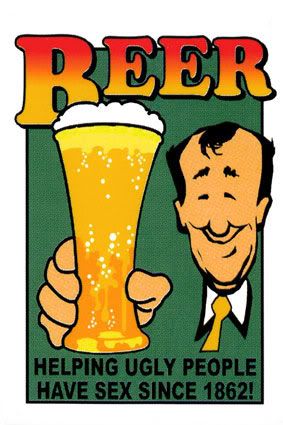Economic Showdown
By BRIAN S. WESBURY
April 19, 2007; Page A17
The Misery Index was first employed by Jimmy Carter in 1976 to unseat President Gerald Ford. That year, the index, which is calculated by adding the unemployment rate to the inflation rate, averaged 13.2%. Four years later it had climbed to 18.2%, and Ronald Reagan used it to unseat Mr. Carter.
Today the Misery Index isn't revealing much misery. As of February 2007, it was only 6.8% (4.5% unemployment plus a 2.3% 12-month increase in the PCE deflator) -- a level bettered in only four years since 1967, and all those years were in the so-called "bubble economy" of the late 1990s.
One would think that complaints about the economy would be few and far between. But complaining has become the national pastime. Not directly about the Misery Index, but about the economy in general, and how much worse we have it today than we did during the Clinton economy in the 1990s in particular.
![[Economic Showdown]](http://online.wsj.com/public/resources/images/ED-AF705_wesbur_20070418160740.gif)
While I find it hard to believe that every complaint is politically motivated, it is difficult to imagine another justification for those who assert that the Clinton economy was better than the Bush economy.
For most Americans, who aren't familiar with economic analysis, it's impossible to determine what's actually happening. But the debate over Bush versus Clinton would be silly, if it weren't potentially influencing policy.
President Clinton took office in January 1993, almost two years after the 1990-91 recession had ended. On the other hand, President Bush took office just two months before the 2001 recession began.
As a result, any economic comparison that uses four-year presidential terms is highly misleading. The Clinton years will always look better than the Bush years with that approach. A better analysis which compares the two business cycles from their previous trough, shows the opposite. The Bush economy is equal to or better than the Clinton economy in almost every area.
President Clinton benefited from gale-force tailwinds. The price of oil fell from $19.82 a barrel in the first quarter of 1993 to $12.84 a barrel in the fourth quarter of 1998. Inflation remained very low. President Clinton also benefited from being in office immediately after the Cold War had ended, allowing him to enjoy the "peace dividend" -- a rapid decline in defense spending which helped bring federal spending down. More importantly, the fall of the Iron Curtain accelerated the global movement of capital and goods.
President Bush, on the other hand, has been faced with gale-force headwinds. In the midst of deflation and an epic stock-market meltdown, the 9/11 attacks occurred just eight months into his term, while the recession he had inherited was still underway. President Bush's massive increase in security spending has effectively offset the benefits of the peace dividend. The burden of government spending, and the cost of shifting resources toward security, are drags on the private sector. In addition, Hurricane Katrina flooded New Orleans, the 38th largest city in the U.S., while oil prices climbed above $70 a barrel.
Trying to compare presidential terms is a useless and biased venture. Cutting through all the rhetoric, the boom of the 1990s was spectacular, and so has been the boom of the 2000s. But they are both part of a longer-term wave of technological innovation that dates to the early 1980s.
During the high-tax, highly regulated years between 1969 and 1982, the economy was in recession 32% of the time. Since then, following Ronald Reagan's tax cuts, and deregulation, and Paul Volcker's victory over inflation, the U.S. economy has only been in recession 5% of the time.
There have been periods of sub-par performance, and one of those periods was the first half of the 1990s -- partly thanks to the first President Bush's and President Clinton's tax hikes.
Many argue that President Clinton's 1993 tax hikes did not hurt the economy, and that this proves taxes don't matter as much as supply-siders think. But nothing could be further from the truth. During the first 64 months of the '90s recovery, real average hourly earnings fell 0.2%, while the unemployment rate fell to 5.5%.
For the current recovery, during its first 64 months, real average hourly earnings are up 1.8%, while the unemployment rate is down to 4.4%. At the grass-roots level, the current recovery is significantly stronger than the 1990s recovery. Despite rhetoric to the contrary, tax cuts are not a giveaway to the rich, but a huge lift to labor demand, and therefore wages. And don't forget, oil prices tripled over this period.
The proof is in the pudding. The early '90s recovery had better performance for financial markets. The S&P 500 increased 73.0% (10.8% annually) during the first 64 months of the '90s recovery, but only 30.3% (5.1% annually) in the first 64 months of the current recovery. But this is somewhat misleading.
The stock market of the early '90s was lifted by the end of communism. But in 2001, it was hit hard by a new age of terrorism, which lifted the risks of investing in the U.S. and around the world. The S&P 500 fell 30% in the 17 months following the attacks. Nonetheless, since tax rates were cut in May 2003, the S&P 500 is up 48.1% -- an annual rate of 10.7% -- a comparable performance to the early 1990s.
The most interesting comparison is in the job market. According to the payroll survey, the current recovery has been weak, with just 6.7 million new jobs versus 11.3 million in the first 64 months of the '90s recovery. But the payroll survey has major problems, mostly because it cannot capture the dynamic nature of our new economy. Because it captures self-employment and does not undercount small business, the civilian jobs survey is much better. It shows 9.9 million new jobs in the 2000s, just slightly less than the 10.1 million new jobs the survey shows for the first 64 months of the '90s recovery.
This is amazing if you stop and think about it. The '90s saw a massive amount of capital thrown at Internet start-up companies that were designed to compete against the status-quo. These new companies staffed up quickly and drove the demand for labor well above its normal trend. The Nasdaq crash changed much of this, but the real shakeout from all of this disruptive technology did not hit until the 2000s.
That is when the inventions of the past two decades really began to pay off. The early years of new technology create a great deal of economic activity and excitement for investors who can fantasize about the future. But it is the implementation phase when productivity and profits boom.
In the first five years of the current recovery, pretax corporate profits are up 107.9%, a significant improvement from the 73.8% growth during the first five years of the '90s recovery.
While some argue that the growth in profits is a sign that greedy rich people are benefiting at the expense of workers, this is not shown in the data. Civilian job growth in the past five years is not statistically different than it was in the early '90s, while wages, for every income level, have experienced better performance.
The big difference between the two periods was that tax rates were hiked in the early '90s, while tax rates were cut in the early 2000s. And, contrary to popular belief, tax cuts, because they lift incentives to invest, always lead to a better environment for the overall population.
This does not mean that the massive transformation of our economy, as new technology up-ends all the old ways of doing things, does not create anxiety or actual pain. But that pain is much less prevalent than most people seem to believe. While misery may love company, it's hard to paint a miserable picture of today's economy.















No comments:
Post a Comment